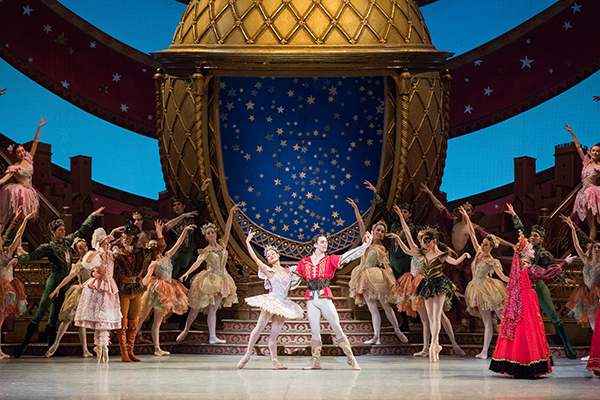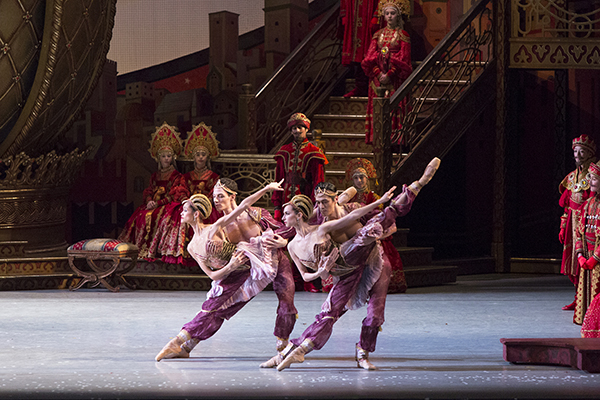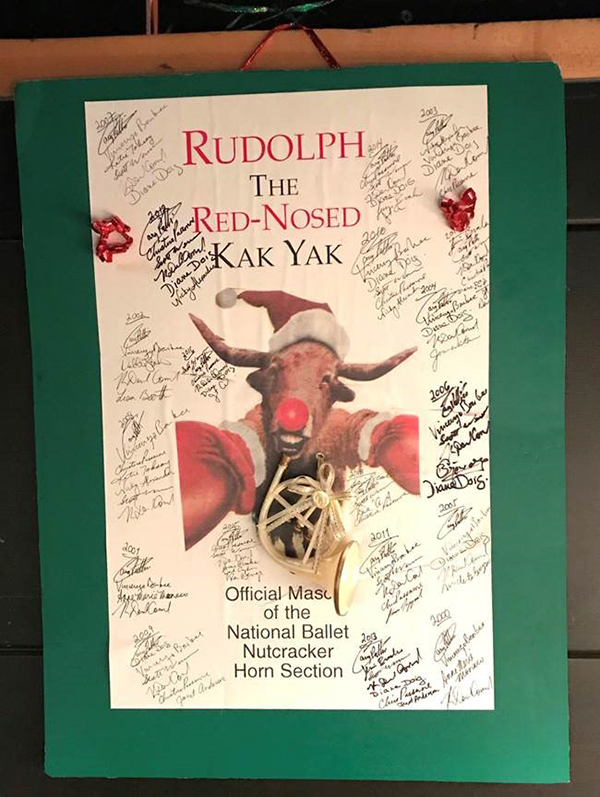Traditions of The Nutcracker
by Catherine Kustanczy
December 2, 2019

The Nutcracker is a special tradition for Toronto audiences. The National Ballet of Canada’s beloved production by
James Kudelka premiered on December 12, 1995, with sets and costumes by
Santo Loquasto.
Tchaikovsky based the score on
E.T.A Hoffman’s story,
The Nutcracker and the Mouse King (1816), later adapted by French writer
Alexandre Dumas as
Histoire d’un casse-noisette (1844). The work made its world premiere (together with Tchaikovsky’s final opera,
Iolanta) in December 1892 at the Mariinsky Theatre, St. Petersburg.
Kudelka, who was Artistic Director of the National Ballet for nine years, refocused Hoffman’s original narrative, replacing the story’s central character, Clara, with two quarrelsome siblings, Misha and Marie. The production, set in a sumptuous 19th century Russia, is an immense undertaking, with 233 performers in total taking part. Making up one of the production’s 65 dancers is Nova Scotia native
Tiffany Mosher, Second Soloist with the National Ballet, who has performed
virtually every female role in the production, save for the Snow Queen and the Sugar Plum Fairy, roles she has understudied. She says the festive spirit extends backstage at the Four Seasons Centre, where dressing rooms glitter with lights and garlands. “We’ve even brought in Christmas trees!”

Musicians are equally festive. Gary Pattison is a long-time member of The National Ballet of Canada Orchestra’s horn section and has performed The Nutcracker annually since 1977. Along with gift exchanges (leading to what he calls an “incredible festive scene in the pit for the last performance before Christmas”), the horn section donates to the National Ballet every year. That support was reflected one year with an inadvertent if seasonally appropriate detail. “We were written up in The Nutcracker’s house programme a number of years ago. When asked for a photo for the article, I managed to submit one that had been photoshopped with elf ears for another project of mine – and none of us noticed!”
When it comes to onstage traditions, bows are particularly special. “We choreograph them ourselves,” Mosher says. “Everyone is trying to outdo each other creatively! Bows are only a short moment so it takes something special to be memorable – we’ve had marriage proposals between the fox and sheep, back flips, confetti tosses, even the Macarena and the moonwalk have made appearances!”
Zany antics extend to the Orchestra, where the horns have their very own seasonal mascot – in 2000, long-time second horn player Vince Barbee (since retired) noted a newspaper advertisement featuring a cartoon Yak with Santa Hat and boxing gloves. Vince adapted it as our mascot by naming it Rudolph the Red-Nosed Kak Yak. The name has particular relevance for French horn players, because, as Pattison explains, “it is known, rightly, as a very treacherous brass instrument to play due to technical reasons about the acoustic nature of its design – sooner or later something will go astray and the horn will miss a note or two, also known as a “kak”. Thus, the name of our guardian Kak Yak.” Pattison had the image made into a poster that very year and the entire horn section (including any extra players who might join the orchestra on a seasonal or show-by-show basis), have signed it. “This will be our 20th year with this tradition.”

Tough moments have also touched The Nutcracker’s performance history. Mosher recalls a year where everyone fell ill with the Norwalk virus. “We had to cut the snow scene down by around four dancers,” she recalls. “Xiao Nan Yu, a Principal Dancer at the time, even stepped into the Snow Corps de Ballet to help out. Women were quick-changing from one divertissement to another in the second act because there just weren’t enough healthy bodies to do all the roles.”
Thankfully, the state of affairs is much healthier now and Mosher is looking forward to the annual Secret Santa. “Someone dresses up as Santa between shows and we all gather and open the gifts,” she notes. “We’ve even begun one between the dancers’ children, bringing in baked goods to eat while we unwrap.”
The observance of traditions, onstage and off, are part of the magic of The Nutcracker.
The Nutcracker is onstage December 12, 2019 – January 4, 2020.